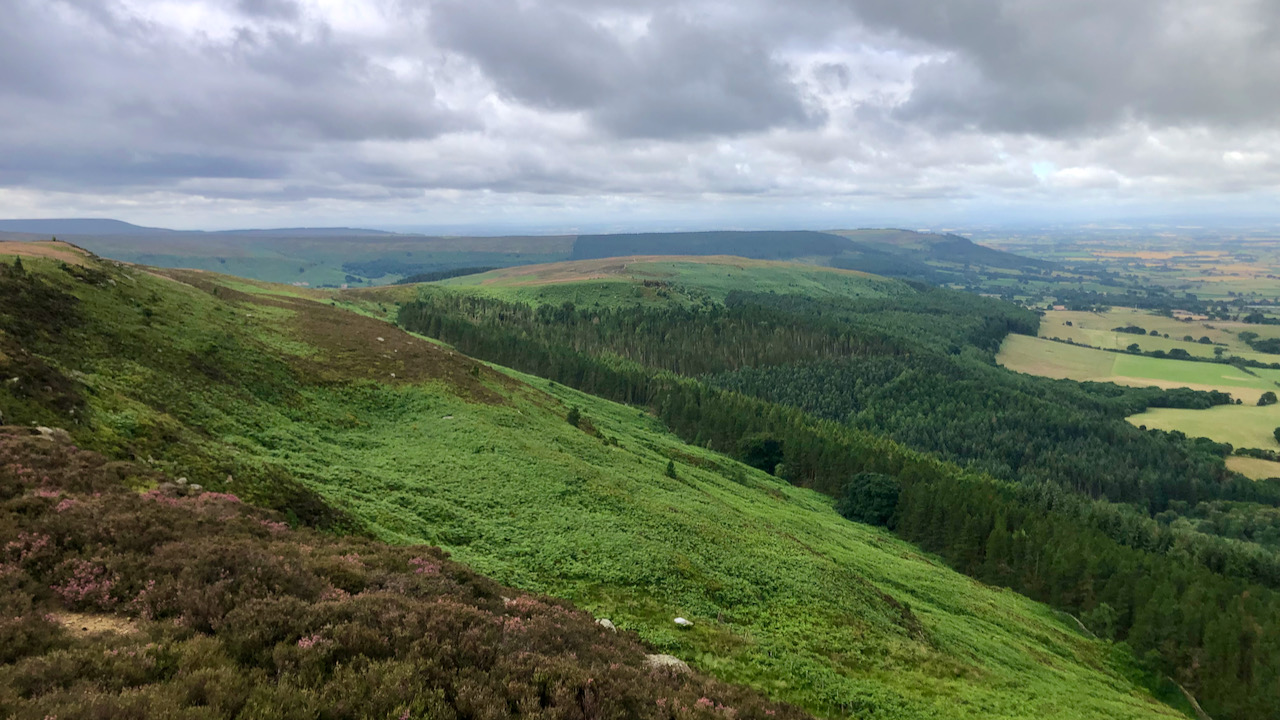One of the classic views of the Cleveland Hills, looking south from Carlton Bank. Faceby Bank, smothered by the coniferous plantations of Great Bonny Cliff Wood, is aptly named after the village nestling beneath that peculiar outlier, known as Whorl Hill, the mythical abode of a fire-breathing dragon.
Recorded in the pages of the Domesday Book as “Fefibi,” it seems that Faceby had been a long-standing possession of the Crown, dating back to ancient times. It appeared to be a flourishing place, although comprising a mere 800 acres of land, three ploughs, a solitary villein (a labourer tied to the land), three bordars (owners of cottages), and a meager ten acres of meadows. It was recorded as being held by was held by the Saxon lords, Lesing and Archil.
When the Normans arrived in 1066, these lords had no choice but to yield their lands to King William’s trusted comrades and confidants. Dispossessed they were, ousted by the likes of his nobles, who arrived under the new king’s banner and “reigned in their stead.”
Thus, when the Conqueror finally settled in and established his reign, he bestowed Faceby upon Robert de Brus, one of the King’s “first favourites.” His descendants held sway until the male lineage met its end in 1289, with the demise of Peter de Brus, leaving his four sisters as his heirs. Subsequently, the estate passed to the de Thwengs and later through marriage to Ralph de Neville of Raby Castle. It remained within the Neville family until the fateful demise of John de Neville, Marquis of Montague, at the Battle of Barnet—a sanguinary clash that was fought in Hertfordshire in 1471.
In that same year of 1471, Richard, Duke of Gloucester (who would later become Richard III and eventually find his resting place beneath a car-park in Leicester), acquired the estate. Faceby again changed hands and came into the possession of the Prissicks, who, in turn, sold it to Edmund Bunting and William Sutton.
Now, turning our attention back to Robert de Brus, it is worth noting that numerous local historians vehemently argue that this family did not actually accompany William the Conqueror in 1066. Instead, they assert that the de Brus family did not set foot on English soil until the years 1115 or 1117.
On the other hand, the entries in the Domesday Book, painstakingly compiled between 1080 and 1086, make mention of the name “Roberti De Bruis” on more than one occasion. For instance, within the Skelton extract, Domesday explicitly declares, “Here lies the manor (or estate) of Roberti De Bruis.” So, best not to delve too deeply into this contentious matter.
Further reading:
Cook, Hugh. W. ‘Cleveland Re-Visited. | Cleveland Standard | Saturday 11 February 1933 | British Newspaper Archive’. 2022. Britishnewspaperarchive.co.uk <https://www.britishnewspaperarchive.co.uk/viewer/bl/0003490/19330211/098/0008> [accessed 22 July 2022]

Leave a Reply